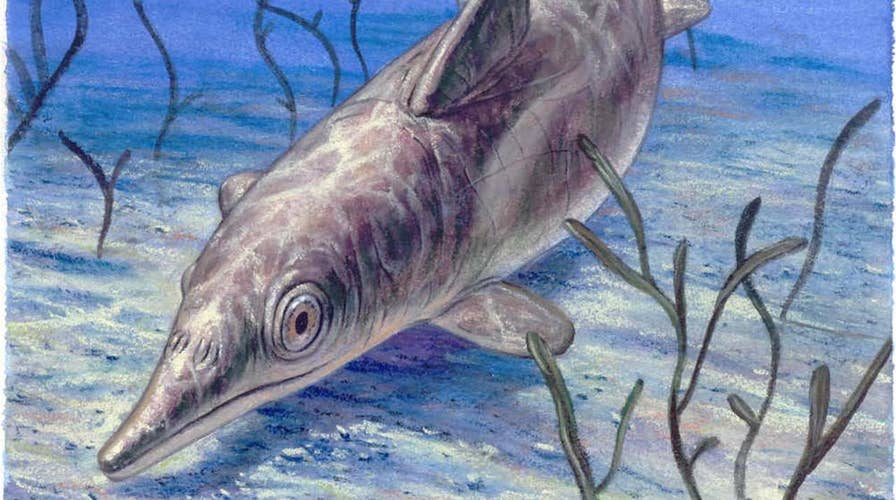'Sea monster' fossil found with skin and blubber residue
The fossil of a 180-million-year-old ichthyosaur from the Jurassic era has been discovered and it contains evidence of blubber and skin, making the creature more similar to modern-day dolphins than previously thought.
The fossil of a 180-million-year-old ichthyosaur from the Jurassic era has been discovered and it contains evidence of blubber and skin, making the creature more similar to modern-day dolphins than previously thought.
The team of researchers from North Carolina State University and Sweden’s Lund University used molecular and microstructural analysis to determine that the creature, described by National Geographic as a "sea monster," was likely warm-blooded and potentially could use its coloration to help it hide from predators.
“Ichthyosaurs are interesting because they have many traits in common with dolphins, but are not at all closely related to those sea-dwelling mammals,” says research co-author Mary Schweitzer in a statement. “We aren’t exactly sure of their biology either. They have many features in common with living marine reptiles like sea turtles, but we know from the fossil record that they gave live birth, which is associated with warm-bloodedness. This study reveals some of those biological mysteries.”
85-MILLION-YEAR-OLD SEA MONSTER FOUND IN KANSAS
Johan Lindgren, the lead author on the study, noted “Both the body outline and remnants of internal organs are clearly visible,” adding “Remarkably, the fossil is so well-preserved that it is possible to observe individual cellular layers within its skin.”
The study has been published in the scientific journal Nature.
In addition to blubber and skin, the researchers found traces of an internal organ that is believed to be the creature's liver.
Evidence of the blubber, which is only found in "animals capable of maintaining body temperatures independent of ambient conditions," as well as the liver denotes that the creature had a similar skin makeup to a whale, dark on top and light on the bottom, to help it avoid predators.
“Both morphologically and chemically, we found that although Stenopterygius would be loosely considered ‘reptiles,’ they lost the scaly skin associated with these animals – just as the modern leatherback sea turtle has,” Schweitzer added in the statement. “Losing the scales reduces drag and increases maneuverability underwater."
He continued: “This animal’s preservation is unusual, especially for a marine environment – but then, the Holzmaden formation is known for its exceptional preservation. This specimen has given us more evidence that these tissues and molecules can preserve for extremely long periods, and that soft tissue analysis can shed light on evolutionary patterns, relationships, and how ancient animals functioned in their environment.
150-MILLION-YEAR 'SEA MONSTER' UNEARTHED IN INDIA
“Our results were repeatable and consistent across labs. This work really shows what we’re capable of discovering when we perform a multidisciplinary, multi-institutional study of an exceptional specimen.”
In April, a 205-million-year ichthyosaur fossil was discovered in southwestern England. The creature was estimated to be nearly 85 feet in length based on the fossil, which would make it nearly the size of a blue whale and "one of the largest animals to ever live."
Follow Chris Ciaccia on Twitter @Chris_Ciaccia
